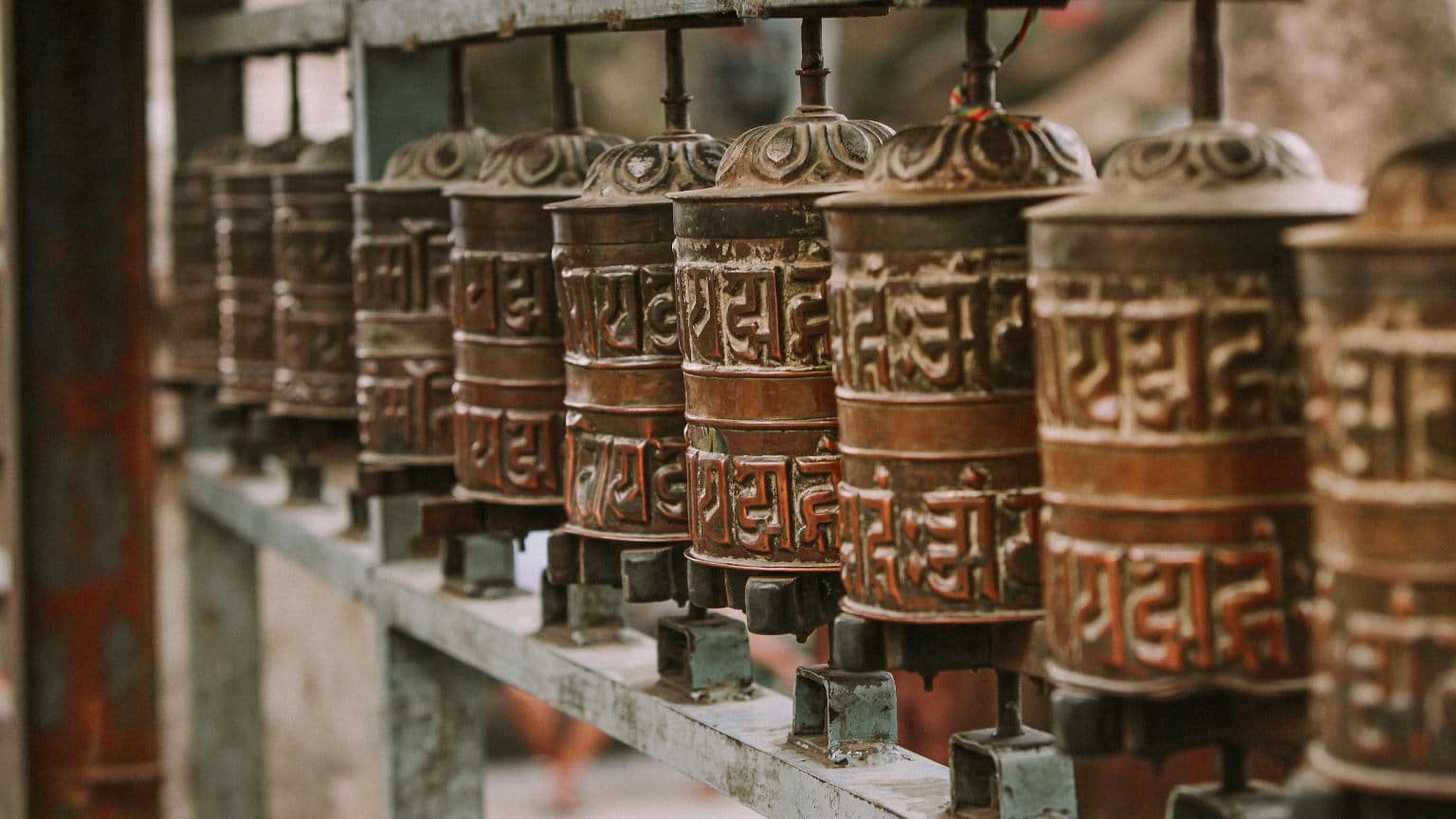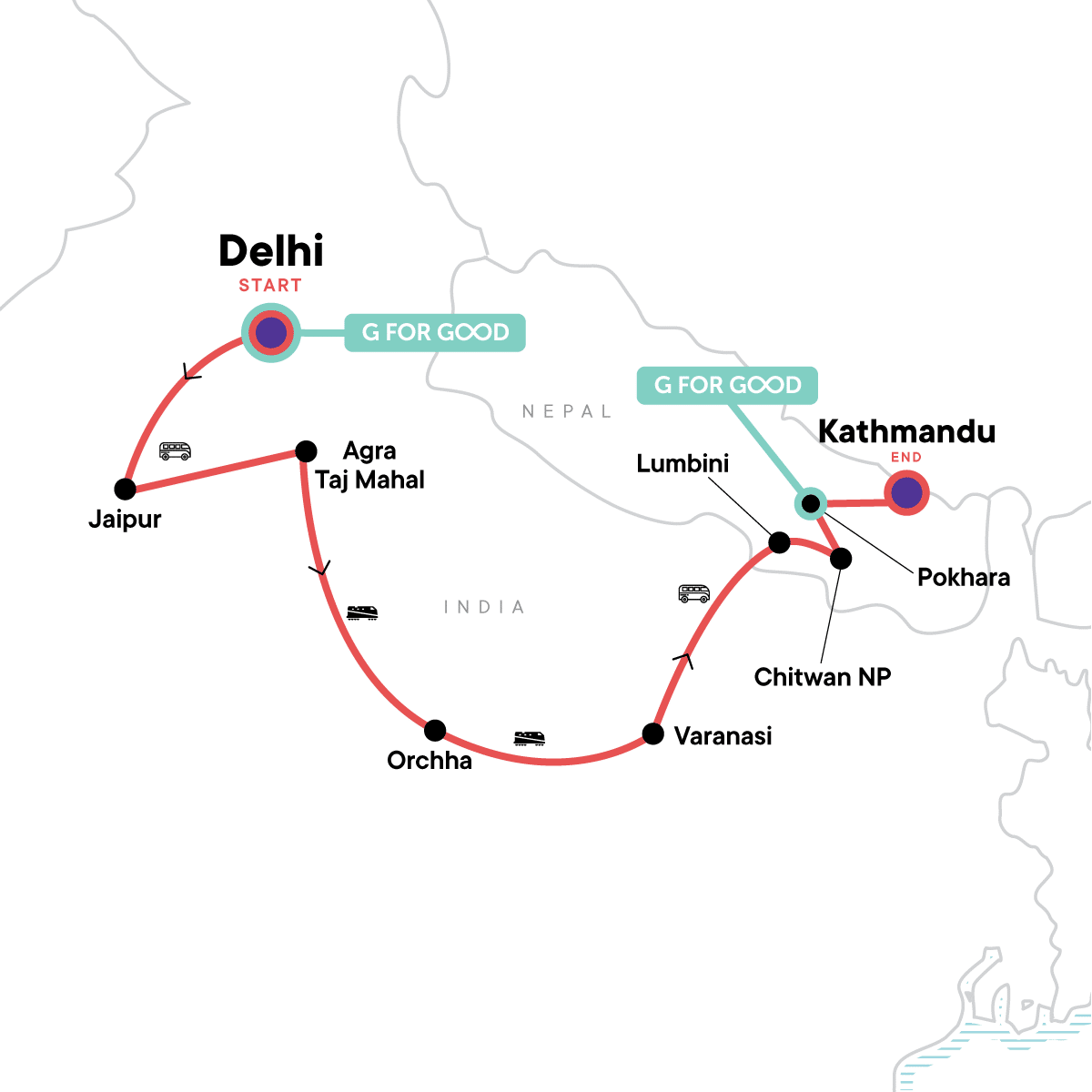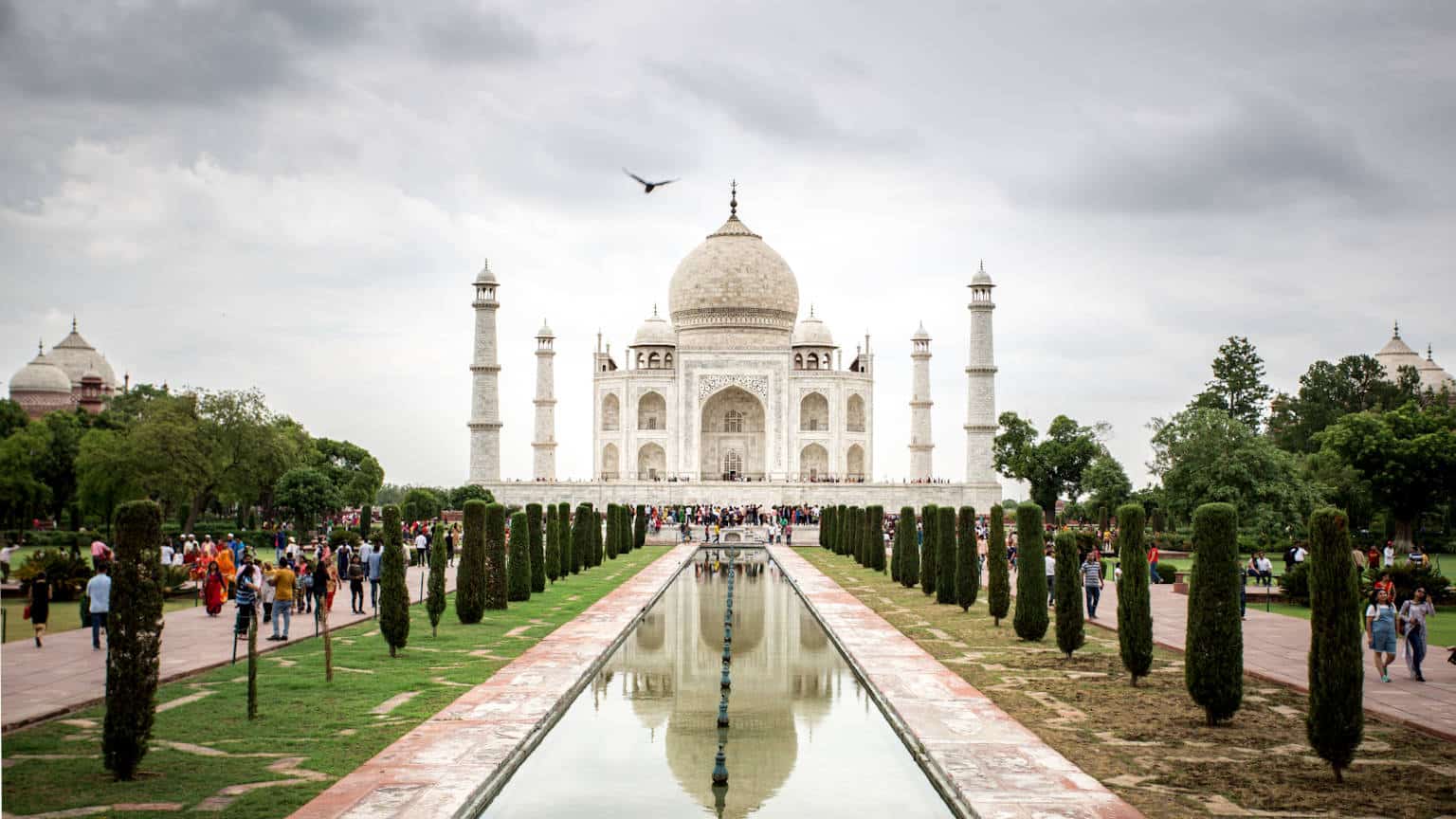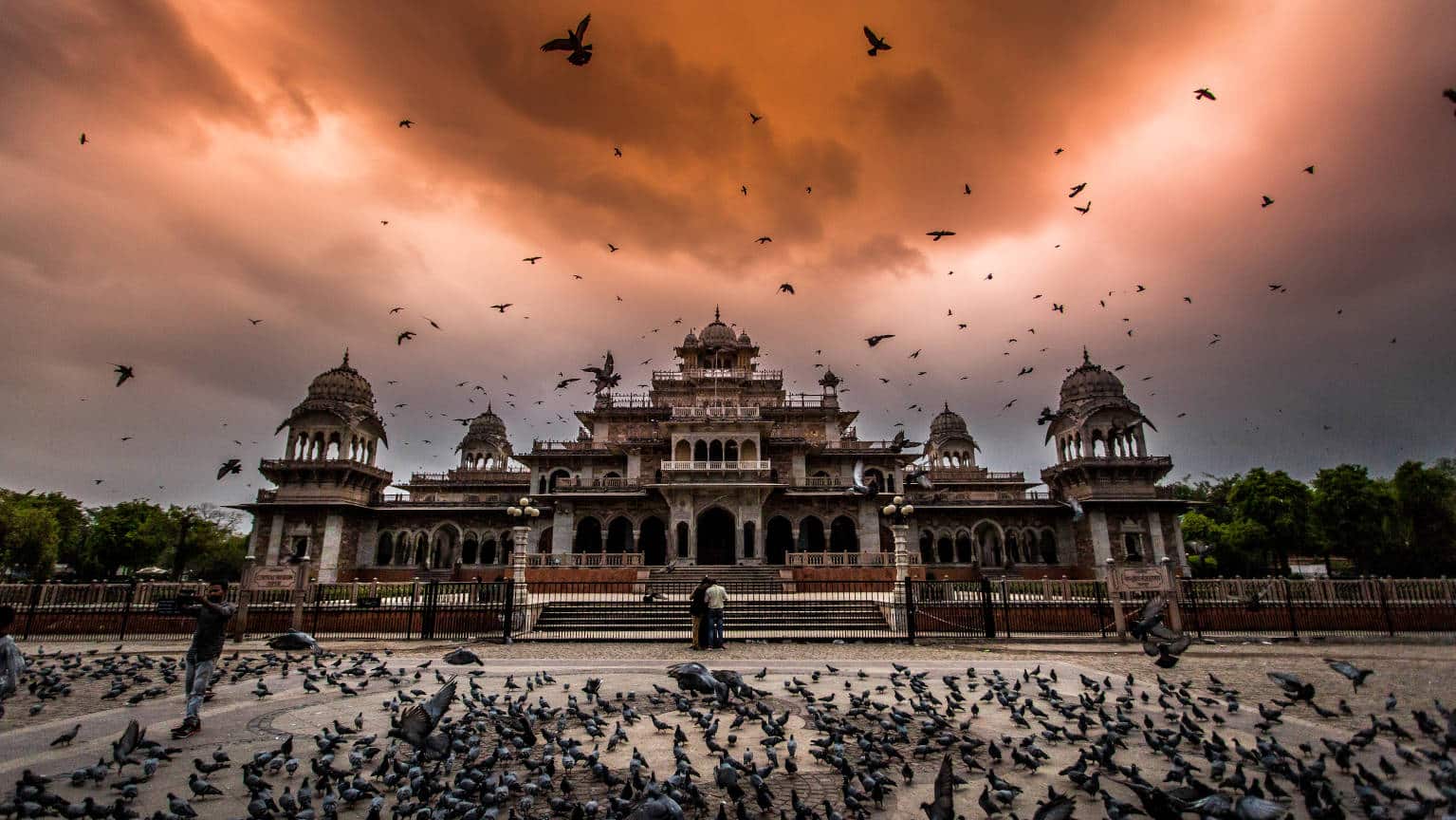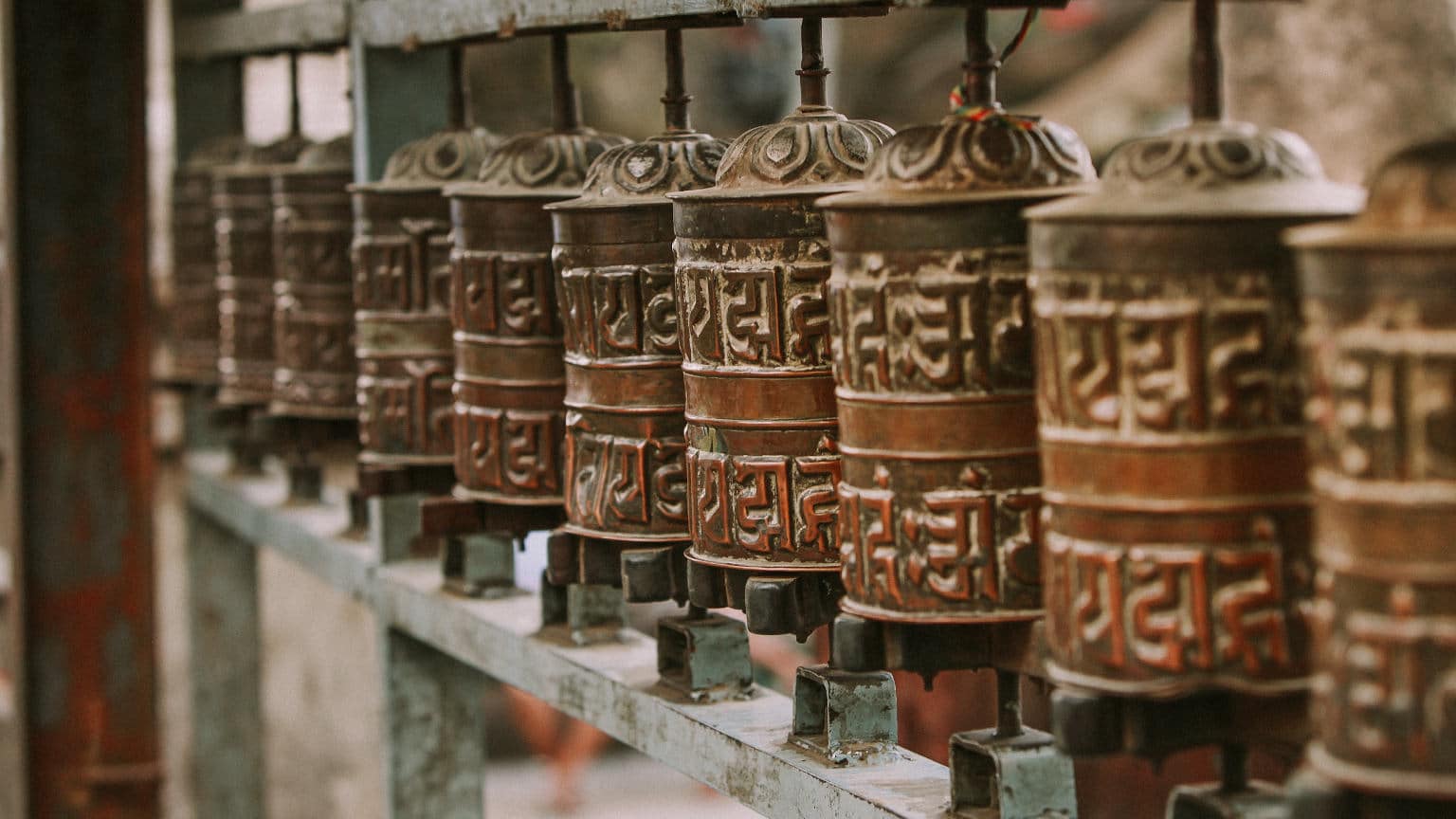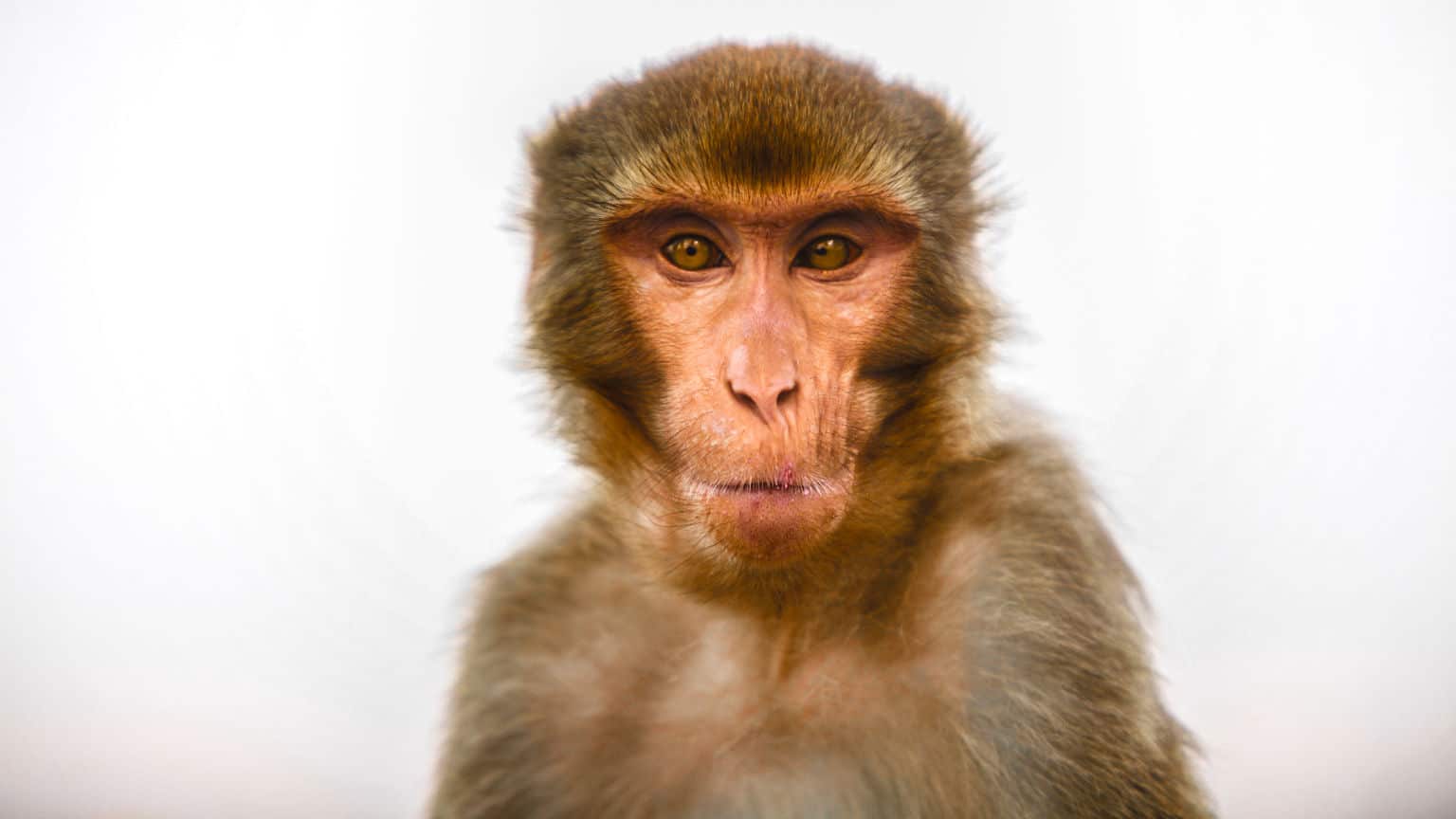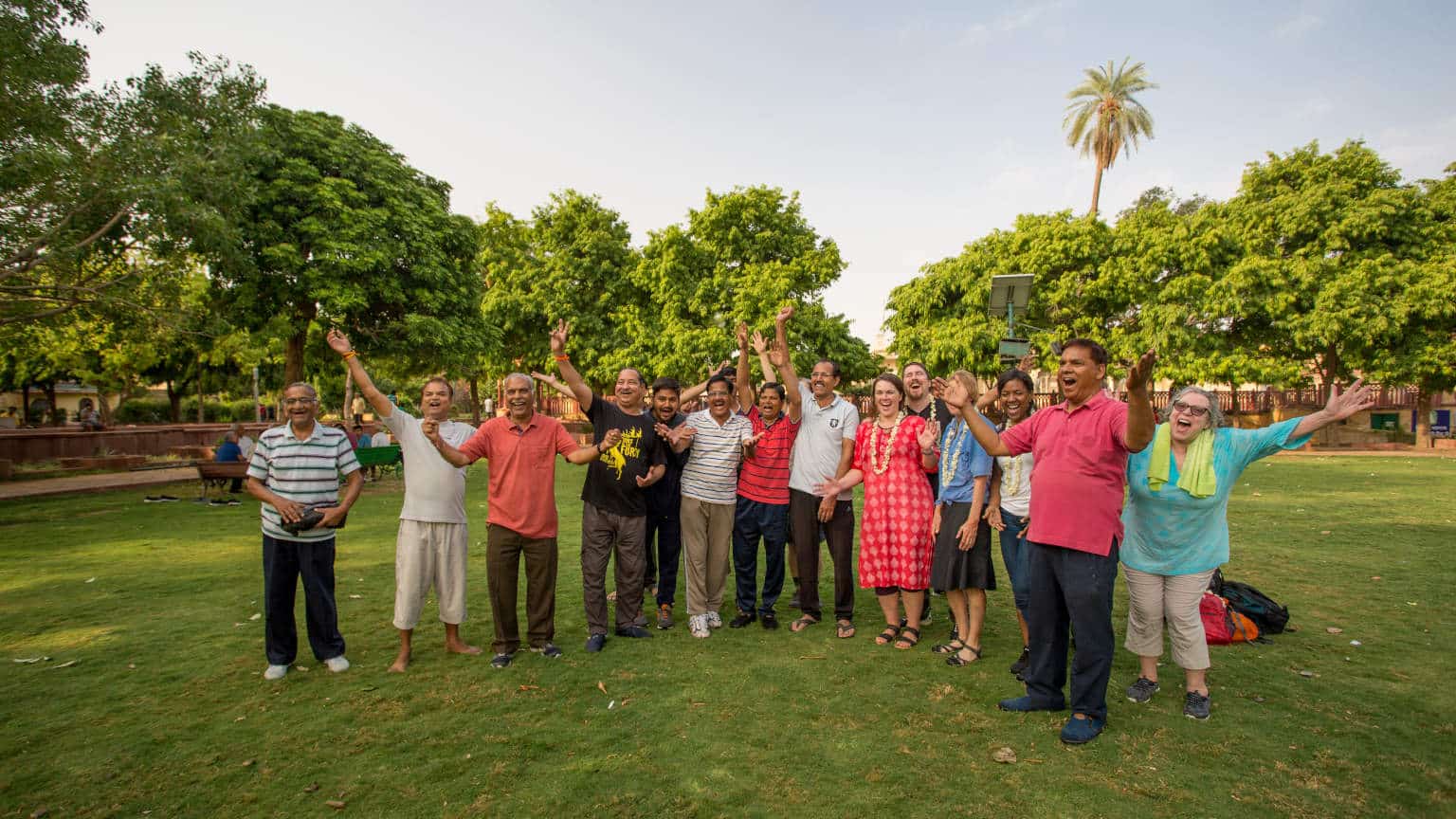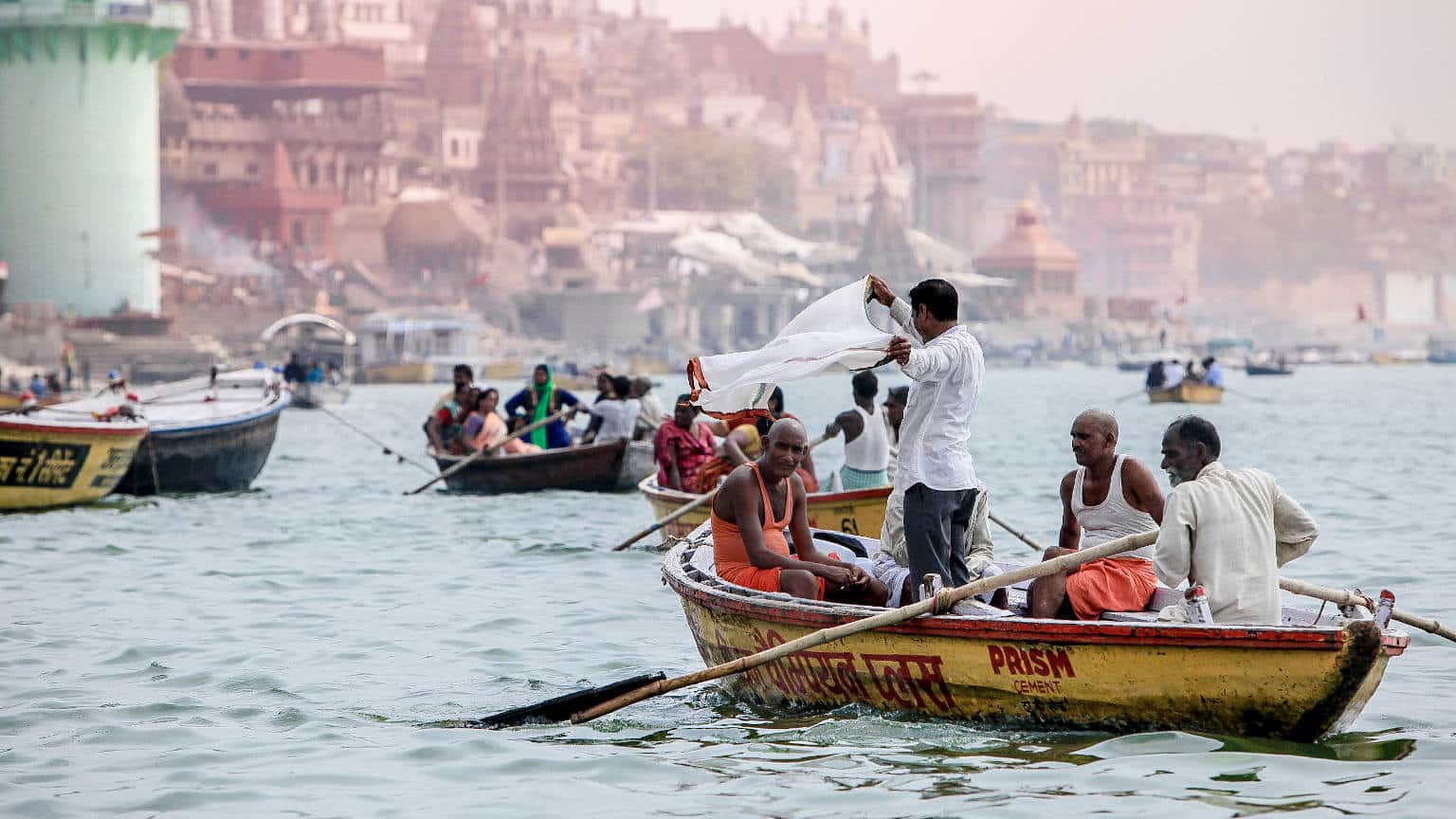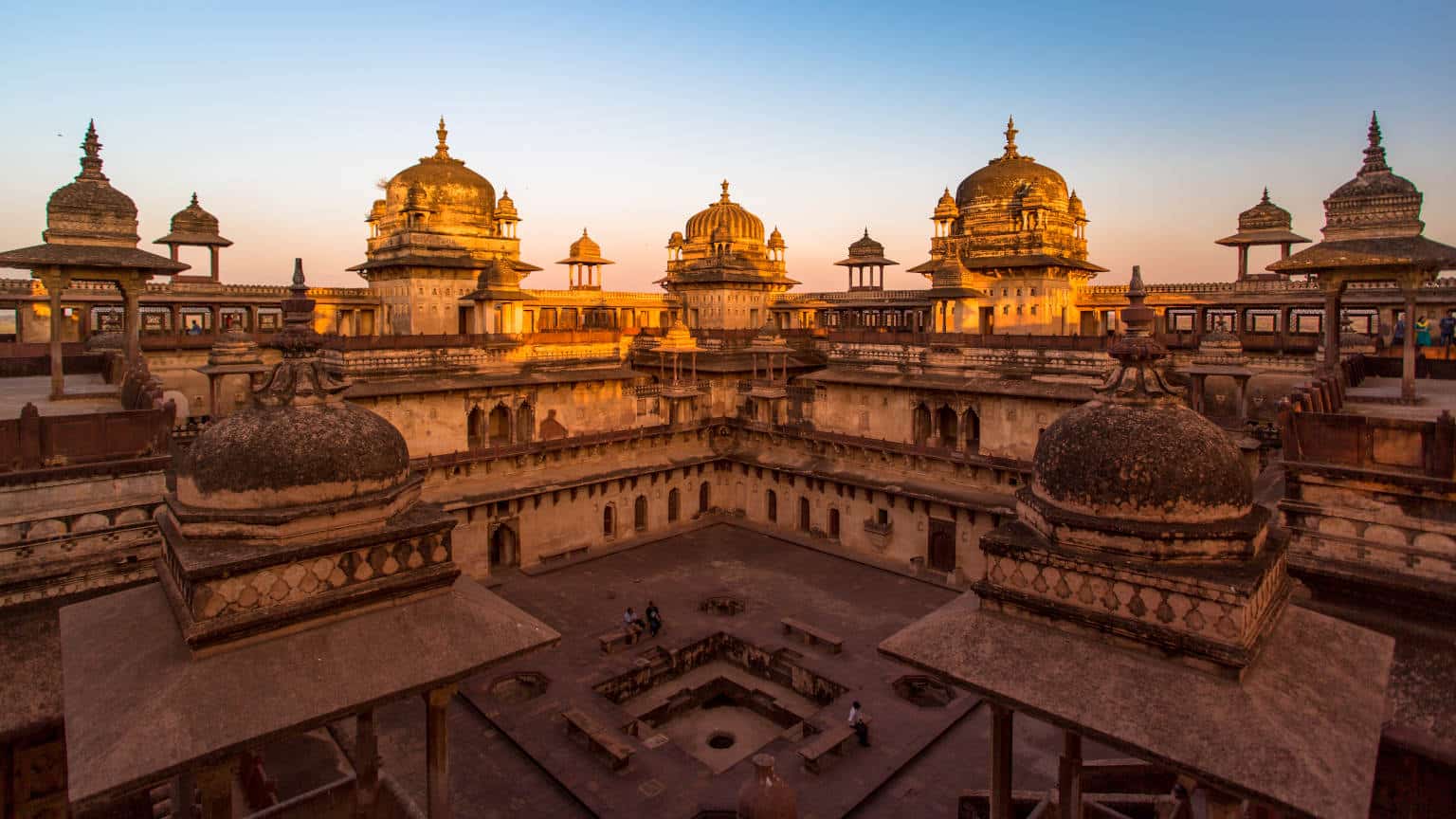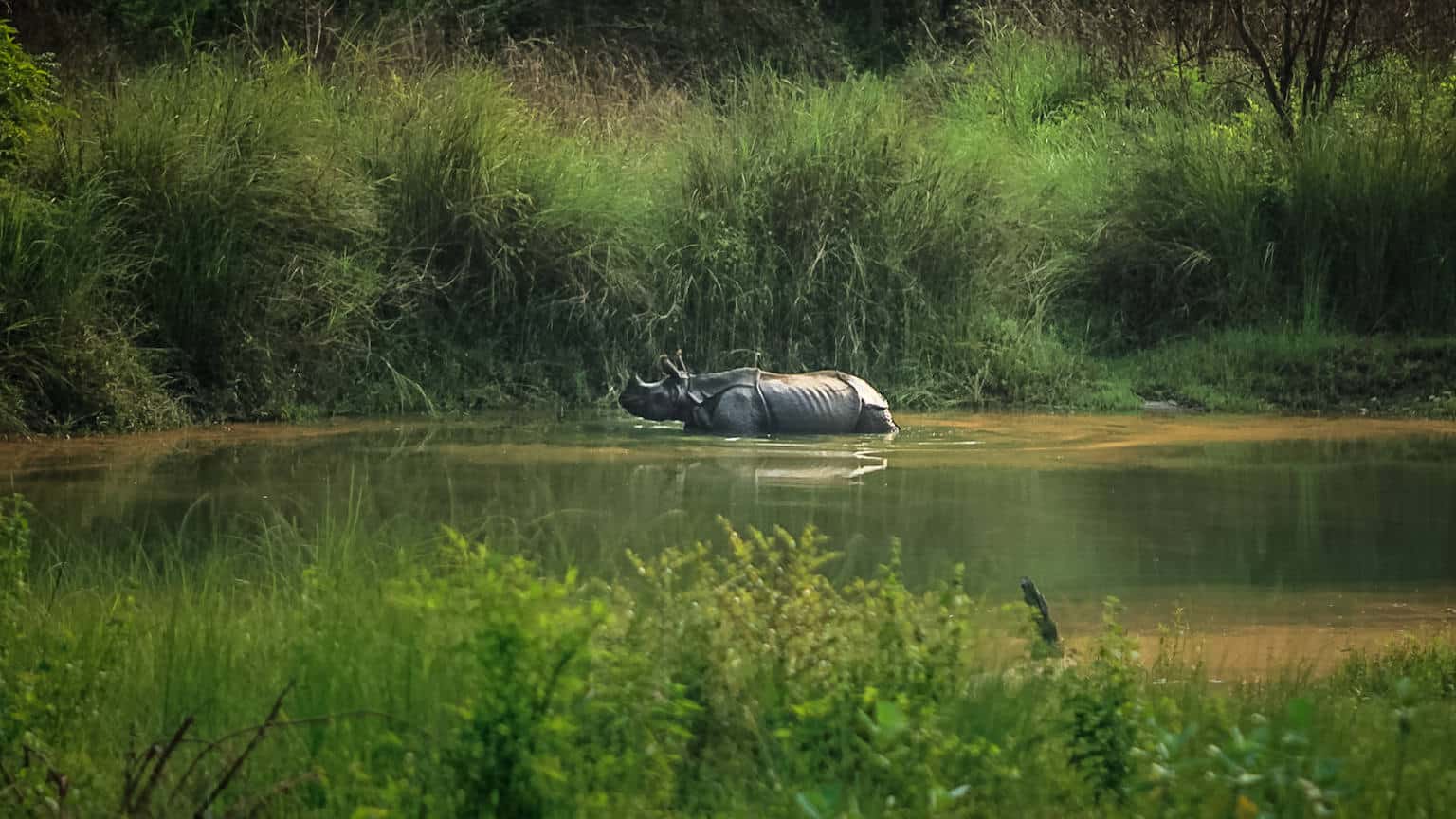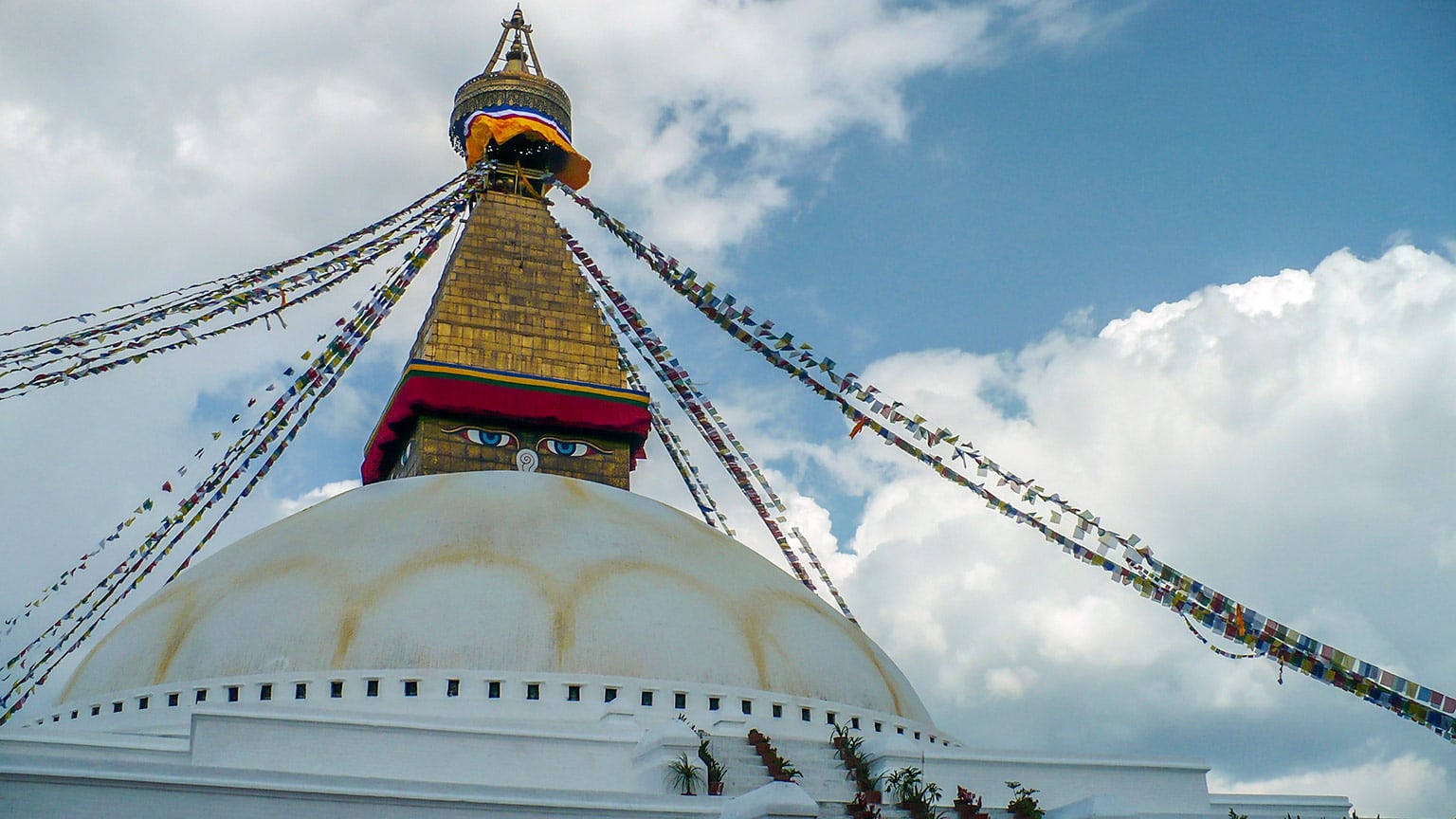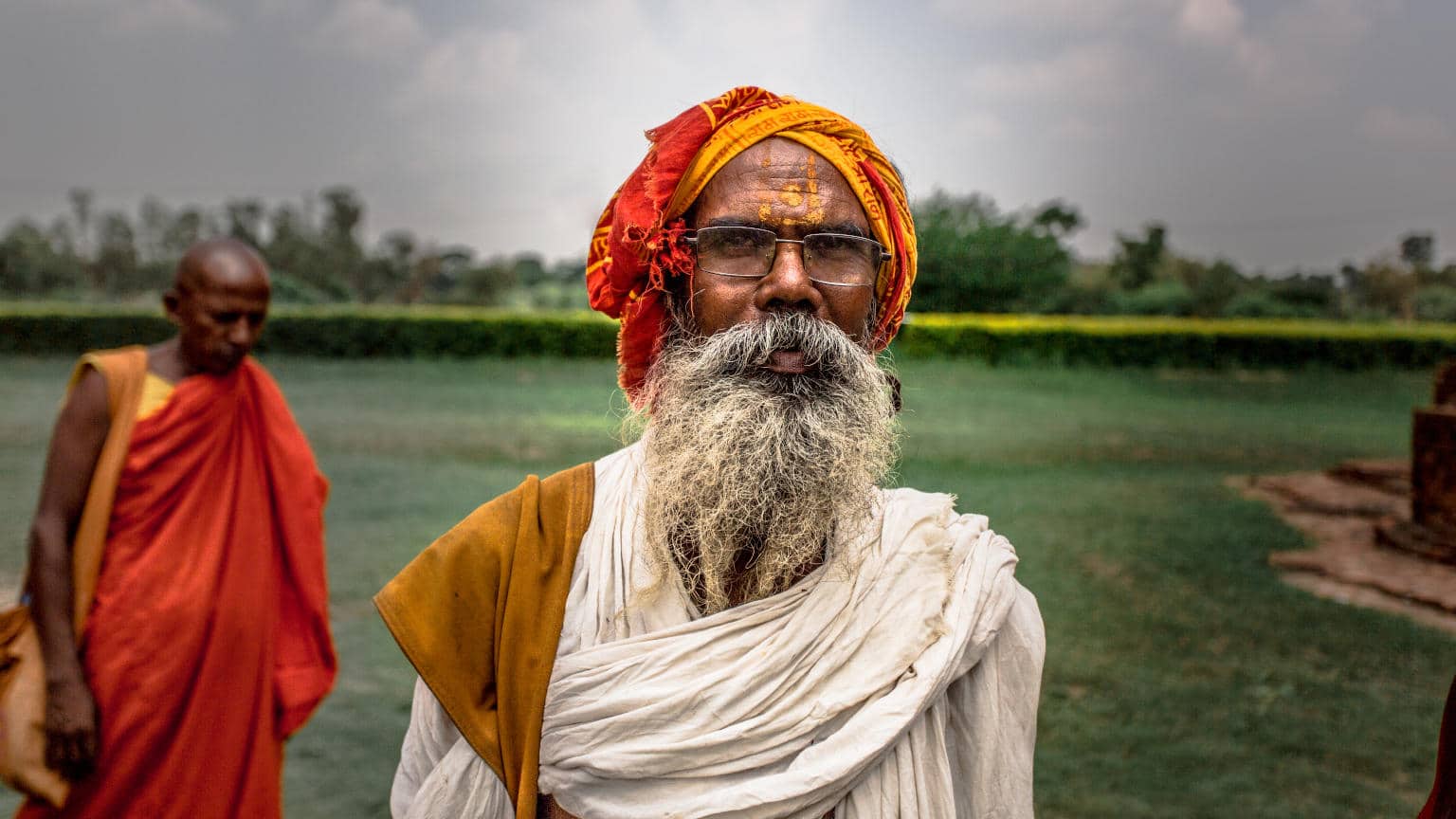Details
Frequently Asked Questions
Please read our general
FAQs, where you can find essential information that applies to all of our programs.
Resources to Learn & Teach about India & Nepal
Visit our
recommended reading page to see the list of books GEEO recommends reading before your program (this is not required reading). We also have
lesson plans and
Pinterest boards that may be useful for you as you learn about your destination and prepare to bring lessons back to your classroom.
Terms and Conditions
It is very important for you to visit our
Terms and Conditions page before signing up for this program.
GEEO Program Confirmation Process
Most GEEO programs are officially confirmed to run once 4 participants have registered. If at least 8 people sign up by our designated deadline, the program will run as a private GEEO trip. Should enrollment fall between 4 and 8, the trip will still take place, but it may transition into a
shared departure with our partner tour operator, G Adventures. In this scenario, the itinerary, dates, and pricing for those who have already registered will remain unchanged, although additional travelers from outside GEEO may join the trip.A large majority of GEEO programs remain private for just educators, retired educators, and their guests. We encourage you to sign up for any program that interests you, and we’ll keep you updated throughout the process—first when 4 participants have registered and again once 8 people have signed up. As always, we recommend exercising caution when making non-refundable travel arrangements (for example, booking flights with flexible change or cancellation policies) until your program is confirmed to run.
Cancellation Policy
All cancellations must be submitted to GEEO in written form by emailing your request for cancellation to
travel@geeo.org. If you do not receive a confirmation that we have received your written cancellation request, please call us at +1 347-433-6674. Verbal cancellation requests will not be honored.
- If you cancel 60 days or more prior to the start of your program, all payments will be refunded excluding your $350 deposit, which is kept on file for future use and never expires. (Exception for participants who receive grants from our university partners: To address disruption caused by cancellation from grant recipients, deposits paid by grant recipients are forfeited upon cancellation.)
- If you cancel between 30 and 59 days prior to the start of your program, you will receive a 50% refund and your deposit will be kept on file for future use and will never expire.
- If you cancel within 30 days prior to the start of your program, you will receive no refund, but your deposit will be kept on file for future use and will never expire.
Trip Notes & Expectations
Before you decide to travel with GEEO, it is important that you read all of the information about the program contained on this page. Our programs are quite adventurous, and we find that clients who read the trip details in full are happier with their experiences.
- ACCOMMODATION: We upgraded accommodation on this program compared to the hotels our tour operator G Adventures typically uses on this itinerary. It costs a bit more, but our guests have been very happy with the change. However, this is India so keep your expectations low as service level and amenities are often different than Western standards. The purpose of the accommodation is to provide a safe place for you to sleep. Sometimes you will be pleasantly surprised, but do not expect luxury. We will still have an overnight train and the homestay, so not all of the accommodation has been upgraded.
- TRANSPORTATION: The same goes for transportation. We use a mix of transportation that gets our guests from location to location safely. Sometimes you will have full days and nights of transportation as our trips tend to cover a lot of ground. Transportation will often be an adventure in itself.
- LUGGAGE: You must be able to easily carry or roll your luggage, so do not over-pack. Properties we stay in with only two stories may not have elevators installed and climbing the stairs with your luggage will be necessary. Carrying your luggage remains your responsibility at all times.
- ACTIVITY LEVEL & PACE: This trip includes light walking and hiking that is suitable for most fitness levels. The hardest element to deal with is the heat and humidity. We have been running this program over the summer for several years, and while the weather is not ideal, the trip always receives great reviews. We recommend always carrying snacks with you. Meals can sometimes be far apart.
- MENTAL PREPARATION: Of all of GEEO’s programs, this is probably the one that causes the most culture shock. India and Nepal are thick with history, wonders, smells, colors, dirt, and bureaucracy the likes of which even experienced travelers have never encountered. It is amazing and at the same time overwhelming. You will see poverty. You will feel uncomfortable. You will probably get diarrhea. India takes some getting used to for most people, and the sooner you mentally adjust to the environment, the sooner you will be able to enjoy yourself. We highly recommend checking out the ‘Advice from Past Participants’ section further down the page for valuable insights and firsthand experiences about the program.
- CULTURE SHOCK/CHALLENGES: India is a country that is very different from anything you will have experienced before. Although this means it is not the easiest place to travel, this is also what makes it so special. Pollution, poverty, and the crowds can result in initial culture shock but should be seen as an exciting new challenge. During our time here, we have come to love this large and wonderfully different country, but we know that we should always expect to encounter some difficulties along the way.
- PATIENCE/FLEXIBILITY: In India, there are very different attitudes to timekeeping, public cleanliness, privacy, and service. Plumbing can sometimes be temperamental, and power will often just vanish. Optimistic menus turn out to have only one dish available and everyone – everyone – will want to know your name. If you are able to travel with a lot of patience and a healthy sense of humor, we know that you – like all of us – will be captivated by what India has to offer.
- STAYING LOW PROFILE: Please be careful about attracting too much attention to the group in large cities. An innocent conversation with a local man in a train station can result in the group being surrounded by 40 curious men who also want to talk or be in the group's physical space. It can get really uncomfortable even if they mean no harm. You will always attract attention as a westerner. Please ask your tour leader what is appropriate before interacting with local men.
- LOCAL CONNECTIONS: During our trip there will be many opportunities for you to meet and "talk" with locals. One way to start any conversation is with pictures. We recommend that you bring some photos/postcards of your family, home, city or country where you live, animals peculiar to your country etc.
- GROUP LEADER: Please make sure you understand the role of your tour leader on this trip. All GEEO/G Adventures group trips are accompanied by one of G Adventure's group leaders, which they refer to as Chief Experience Officers (CEO). The aim of the group leader is to take the hassle out of your travels and to help you have the best trip possible. They will provide information on the places you are traveling through, offer suggestions for things to do and see, recommend great local eating venues, and introduce you to our local friends. Our itineraries often have plenty of free time to explore on your own. While not being guides in the traditional sense, you can expect them to have a broad general knowledge of the countries visited on the trip, including historical, cultural, religious, and social aspects. We also use local guides where we think more specific knowledge will add to the enjoyment of the places we are visiting – we think it’s the best of both worlds.
Single Travelers
Half of GEEO’s participants travel by themselves, so please don’t worry if you do not have a travel companion for your trip. Our program fee is for one traveler in double-occupancy accommodation, and GEEO can find you a roommate of the same gender if you do not have a travel companion. Most of our programs have a “My Own Room” option, also known as a “Single Supplement,” which is an extra fee that you can pay to have a room to yourself. You will only incur an additional charge if you specifically request a single room. To see the price for the “My Own Room” option, please find your program on our
extra services page. If you want to room alone, please email
travel@geeo.org to request a single room.
Emergency Contacts
Should you need to contact G Adventures during a situation of dire need, it is best to first call their local G Adventures office. If for any reason you do not receive an immediate answer, please leave a detailed message and contact information so they may return your call and assist you as soon as possible.
EMERGENCY CONTACT NUMBERS
G Adventures Local Office (Delhi)
G Adventures South Asia Manager, Rishab (Delhi, India)
Emergency number:
From outside of India: +91 99 7179 5447
From within Delhi: 99 7179 5447
From within India, but outside Delhi: 099 7179 5447
G Adventures Asia Office in Bangkok (If for some reason you can’t reach any of India emergency numbers)
8:00 a.m.-6:00 p.m. CST (GMT +7)
Tel: +66 2 252 6642
If for any reason you are unable to reach the G Adventures local office, please call the numbers listed below to connect with their Sales team, who will happily assist you.
Toll-free, North America only: 1 888 800 4100
Calls from UK: 0344 272 0000
Calls from Germany: 0800 365 1000
Calls from Australia: 1 300 796 618
Calls from New Zealand: 0800 333 307
Outside North America, Australia, New Zealand, Germany and the UK: +1 416 260 0999
If your call is specifically concerning Airport Transfer complications, please call the local transfer provider directly:
From outside India: +91 9278708888
From within Delhi: 9278708888
From outside Delhi: 09278708888
Airport Representative
From outside India: +919599193260 or +919599051397
From within Delhi: 9599193260 or 9599051397
Packing List
Please
read this article on GEEO’s blog for our staff’s suggestions on the best gear to pack for your upcoming travels. You must be prepared to carry your own bags and be comfortable carrying them up and down stairs, on and off transportation, and to hotels. As a rule, we try not to have to walk more than 15-20 minutes with your bags, which is why we recommend keeping the weight of your bags between 22-30 lb. Most travelers carry a backpack or rolling bag of small to medium size. No XXL bags please! A daypack is also essential for carrying everyday items. Space is limited on transportation, so there is a limit of one main piece of luggage per person plus a daypack per person.
Suggested (click to expand)
- Clothes for religious sites – knees and shoulders must be covered
- Small towel and swimwear
- Raincoat and/or umbrella
- Personal clothing for hot weather – we recommend packing 8-9 days of outfits, so you only have to do laundry once; covering shoulders is advisable
- Shorts – covering knees is advisable for women; some would say men too
- Long pants
- Sturdy walking shoes – closed-toe is a good idea
- Sport sandals or flip-flops
- Daypack
- Insect repellent
- Sunblock
- Sunglasses
- Sun hat
- Watch or alarm clock (or use your phone)
- Toiletries – your hotels will have soap and shampoo
- Camera (or use your phone)
- First-aid kit, including: lip salve, aspirin, bandaids, anti-histamine, Dramamine, Imodium or similar tablets for mild cases of diarrhea, electrolyte powder, insect repellent, extra prescription drugs you may be taking
Optional (click to expand)
- Light weight silk sleep sheet – very nice to have on the train
- Travel pillow
- Lock for all bags
- Flashlight or headlamp (or use your phone)
- Money belt
- Water bottle
- Phone/tablet for internet – most hotels have WiFi
- Chargers for electronics as well as converters/adapters, if needed
- AirTags or Tile trackers
- Packing cubes
- Earplugs
- Snacks – packing a few granola bars is a good idea; you can buy snacks when you get there too, so don’t go crazy here
- Ziplock bags for wet clothing
- Reading/writing material
- Hand sanitizer/baby wipes
- Headscarf for women
- Light fleece top
- Cover for backpack or plastic bags to keep clothes dry
Documents (click to expand)
- Passport (with photocopies)
- Any entry visas or vaccination certificates required
- Travel insurance ID card
- Flight itinerary/boarding pass(es)
- USD/EUR cash
- Credit/debit card
- G Adventures vouchers
- GEEO Classroom action plans for your group – this is sent a few days before departure
Laundry
Laundry facilities are offered by some of our hotels for a charge, or you can ask your tour leader where the nearest laundromat is located. In case you want to do your own laundry, we suggest you bring your own non-polluting/biodegradable soap.
Passports and Visas
All GEEO programs require that the participant have a valid passport. Please see our general
FAQ for information on obtaining a passport. As with all of our trips, we try to provide the most accurate information we can, but governments sometimes change visa rules. It is your responsibility to double check the information we provide below by searching
the U.S. State Department's International Travel Guidance.
PASSPORT
Your passport must be valid for at least six months beyond your intended departure date from India, Nepal, and any additional countries on this trip. Ensure your passport has at least two blank pages per country for entry and exit stamps.
VISA
INDIA
U.S. citizens must purchase a visa in advance before traveling to India. India has an e-visa system that makes the process quite easy, and you do not have to send your passport to an embassy. The 30-day India tourist e-visa costs $10 (April to June) or $25 (July to March).
Important:
- Visa validity begins on the date of issue, not on your arrival date.
- Apply for your visa 25–20 days before your arrival in India. (You can apply no earlier than 30 days before your scheduled arrival date and no later than 4 days before arrival).
- If your visa expires before your arrival date due to flight delays or cancellations, you may be denied entry to India.
To apply, visit the
official Indian e-Visa website and follow the instructions carefully. GEEO will provide further instructions approximately one month before your program begins.
We have created an India eVisa Application Guidance document with more detailed explanations, including screenshots, for your reference.
NEPAL
U.S. citizens also need a visa to visit Nepal. You can obtain a tourist visa for Nepal upon arrival at the border.
The 15-day single-entry visa costs $30 USD, payable in
cash only. Bring crisp, new bills in the exact amount (e.g., one $10 bill and one $20 bill), as change is not provided. At the border, your photo will be taken, and the visa will be issued.
Money Exchange
The local currency in India is the Indian rupee (INR), and the local currency is Nepal is the Nepalese rupee (NPR), although the Indian rupee is also widely accepted. As currency exchange rates fluctuate, we ask that you refer to the following website for daily exchange rates: www.xe.com.
We recommend that you obtain cash from ATMs while traveling; they will dispense the local currency. We do, however, recommend that you bring at least $200 USD in cash for emergency use or in case you have trouble with the ATMs. Major credit cards are accepted in most shops, but you may be charged an international transaction fee; ask your financial institution about their international fees. Please note that if you are carrying U.S. dollars, the bills should be in good condition (i.e., not torn, wrinkled, or marked on in any way) and dated recently.
Tipping
It is customary to leave a small tip for service providers, such as waiters, if you are pleased with the service. Tipping is an expected, though not compulsory, component of this program and an expression of satisfaction with the people who assist you on your trip. Although it may not be customary to you, it is of considerable significance to the people who will take care of you during your travels.
There will be opportunities during the trip to tip your local guides or drivers. You may do this individually, or your tour leader may offer to collect the money and give a tip on behalf of the group. Ask your tour leader for specific recommendations based on the circumstances and expectations. Also, at the end of your program, if you felt your G Adventures tour leader did an outstanding job, a tip would be appreciated. Tipping amounts are entirely your personal preference, but as a guideline:
- Service providers/Waiters: 10% of the bill
- Local guides and drivers: $2-3 USD per person per day
- Tour Guide (CEO): $20-30 USD per person per week. We recommend tipping your tour leader in crisp $10 and $20 bills.
Vaccinations
GEEO cannot provide any medical advice, so it is very important to consult your doctor or a travel clinic about which vaccinations you will need for your trip. We recommend contacting
Passport Health, which has travel clinics located throughout the United States. You can also check the
CDC's recommended vaccinations for your destination. Please take this seriously!
Flights
We find the best prices for flights are often available around 90-120 days before departure, but of course this varies greatly from route to route and year to year.
You should wait until this trip is confirmed before you book non-refundable flights. GEEO and G Adventures bear no responsibility for any flights purchased before the trip is confirmed.
This program begins in Delhi and ends in Kathmandu. Please double-check our itinerary for the date by which you must arrive in Delhi. You may want to arrive in Delhi one or more days early in case you have flight disruptions. You can arrive at any time you choose, but try to make it in time for our 6:00 p.m. Welcome Meeting on Day 1. You can depart from Kathmandu any time on the final day of the program. For about $100, you can book a short flight from Kathmandu to Delhi, in which case you could buy a round-trip flight from your home city to Delhi.
Plugs and Converters
There are two components to provide external power to your device: adapters and transformers (also called electrical converters). The adapter is for your device's plug, adapting the prongs on a standard U.S. two- to three-pronged power cord to fit the local outlets. The transformer/converter changes the local voltage to the voltage used in the U.S.
India and Nepal use Type C and D plugs with two or three circular prongs, respectively, and the voltage is 230V. (Standard U.S. electrical outlets are 120V.) Most new devices, including phones and laptops, are made to work with the different voltage rates, but some devices, like hair dryers, may only work on the U.S. standard of 120V. Check your device's plug or manual to see what voltage range it requires. Most transformer blocks will have an “Input” line that defines its voltage capacity; for example, “Input: 100-240V” means that it will work with voltages between 100V to 240V. If your device can’t handle the higher voltage, you’ll need to purchase a transformer/converter. You can find world transformers/converters online or at many retail stores in the travel section.
Weather
We run this trip before and/or after the peak of the monsoon season in South Asia (early to late July) to avoid the worst of the rain and flooding. It is still hot and will rain, but all of the trips we have run in the past at this time of year have gone fairly smoothly with regards to the weather.
🗣️ Advice From Past Participants
“I wish I had known not to be so anxious about this trip! I was worried I would be uncomfortable, and hungry (or sick) the entire time, however, that was completely not the case. Yes, it is hot and humid, but it is tolerable. Dress appropriately with extreme heat fabrics and you will be fine, stay hydrated and well-fed and you will be fine. The food was amazing and one of the highlights of the trip. In order to avoid Delhi Belly, etc., I made sure to eat lightly while my stomach adjusted to the new spices, etc., and I never got sick. I wish that I had brought a wider variety of clothes to wear since I ended up feeling sick of the same identical pairs of linen pants after a couple of weeks of wearing them! Also, laundry is available everywhere you stay more than one night, so keep that in mind while packing! Ladies, keep in mind humidity and dampness can mess with your pH balance if you know what I mean… Pack some Monistat! Most importantly have an open mind. Don’t expect to eat western or colonial food, don’t expect to blend right in with the locals (big group of Americans does attract attention), and don’t expect planes, trains, and automobiles to run flawlessly – but isn’t that all part of the adventure?”
“There are a lot of things that people tell you that intimidate people from going to India. In the end, though, the people are friendly, the hotels are great (with an occasional cold shower or power outage, which should be expected), the food is excellent, the culture is rich, and the tour guide showed a great deal of care for the group and our safety and well being. I’m so glad I went on this trip!”
“This trip is fast-paced, and you will have to wake up early on several mornings. It’s great because we see a lot, but know this isn’t exactly a relaxing vacation.”
“If you are unhappy with your hotel room, don’t be shy: ask the hotel to change your room as sometimes there are big differences from one room to another.”
“Pack light – laundry is readily available. Bring a hat. It’s ok to bring tank tops and shorts. You won’t be able to wear them all the time, but sometimes it’s good to have some options. Bring a swimsuit – the upgraded hotel pools are very nice. You will sweat. A lot. I mean more than you ever have in your life. Bring extra undergarments, because you will want to change after sweating through everything at the end of the day. The mosquitoes weren’t as big of a deal as I had previously thought but still wear bug spray. Some people struggled with the air quality, so be sure to have your inhaler with you if you use one. WiFi is available almost everywhere, but it can be slow, especially in India. Don’t expect to upload all your pictures while on the trip. Drink more water than you think you need. Choose to smile. And just enjoy the magic that is India and Nepal.”
“Do NOT bring small U.S. bills to India, if you are bringing cash. A lot of the banks would only change $50 or $100 bills. The hotels would change money for you with NO charge and no crazy paperwork (as compared to money exchange places or banks). Do not bring Indian bills into Nepal bigger than 500 Indian rupees. The same would go in reverse for coming back to India. The airport would only take 1,000 Nepalese rupee notes. ATMs were plentiful and our tour leader was able to guide us to take out a certain amount if one was not available for a few days.”
“Don’t worry about dressing to cover your shoulders and knees unless visiting a temple (our guide let us know ahead of time). We all wore knee-length shorts and skirts, short-sleeved shirts, basically what we wear at home.”
“We recommend an extra day in Delhi at trip’s start to visit the National Museum, the Crafts Museum, and the Gandhi Smriti. Likewise, we added one extra day in Kathmandu. We hired a car and driver one day and went to the other two main cities in the valley, Bharatpur, and Patan. These were real highlights for us as was a stop at Paliputra on the way back to Kathmandu.”
“I was concerned about being left to do things without my group members and/or guide. I was happy to always have company, whether shopping, touring, or eating. I think this would help ease people who are hesitant about visiting certain countries.”
"You'll take off your shoes a lot to visit temples and floors are often wet. I had packed sneakers and didn't even touch them--I wore my Chaco sandals every day of the trip so that I wouldn't have to put wet feet back inside sneakers."
"Bathroom floors are always wet and TP and towels are rarely provided. For that reason, I'm glad that all the clothes I packed had pockets to carry my own TP in with me."
"Portion sizes are huge. We consistently couldn't finish our meals, but servers had trouble understanding when we wanted to share items."
"I strongly recommend wearing loose, cotton/linen/Smartwool clothing. Pack enough clothes and undies for about 6 days. You'll have plenty of opportunities to wash laundry (each hotel where you stay two nights) BUT you won't want to re-wear anything because it will all get so sweaty. Pro-tip: I travel with a small bottle of Dr. Bronner's to handwash bras, panties, and other small items in the sink."
"Random items I was glad to have along: a small headlamp, a small lock & cable, some electrolyte packets, and a pair of binoculars."
"Everything I read about packing for India recommended covering knees and shoulders, so I didn't pack any shorts or tank tops. Although some folks in the group wore tank tops and shorts, I'm personally glad that I didn't because I didn't see any Indian women wearing shorts or tanks. You will be stared at no matter what, so I would rather make sure it's mere curiosity than shock, if that makes sense."
Overnight Train
From a recent traveler:
“Arriving at the train station, you will most likely see hundreds of Indians crowded in front of the station. Once on the train, the sleeping quarters are very crowded. You need to make sure you are traveling with luggage that is easy to carry and store. Less is better. You will be provided with a blanket and sheet and pillow, but it is recommended that you bring along a travel sheet (like a sleeping bag, but just made of cotton or silk). It will make sleeping on the train more comfortable. There is no food or water on the train, so be certain to bring PLENTY of water and snacks. It is a 12-hour train ride and, after you leave the train, there is still quite a bit of travel until you will have an opportunity to eat a full meal.
Although initially, the train may feel unsafe, once you get settled in, you will realize that everyone is just wanting to sleep and get to their destination. Don’t be surprised if you are in sleeping quarters with 6 people who are not in your group. They fill all the beds, which are arranged in bunk-bed style stacked 3 high, and they will have men and women sleeping in the same compartment.”
"I had a wonderful roommate, but if I did this again I would probably choose to room alone. I'm an extrovert who loves talking and interacting with people, but a little downtime might have been a good idea. That said, the option to save money by rooming together is great."
"- Comfortable waterproof shoes like Tevas or Chacos are the best. I wore mine almost all day, every day. Don't stress about the closed-toe shoe thing, which is one of the tips you get on the internet. Open toes are fine.
- Be sure to have sunglasses and sunscreen
- I never used my trusty reusable water bottle on this trip; I just drank bottled water because that was safest.
- Bring Nuun tablets for rehydration
- A small crossbody bag or fanny pack is better than a day pack for everyday sightseeing
- Say YES to any experience offered!"
Poverty
From a recent traveler:
“Even though you may be a seasoned traveler, you need to keep in mind that a trip to India is unlike most places in the world. Most people know that India is a poor country, but it can be a shock to all your senses when you arrive and experience poverty on a more intimate level. People, in massive numbers, are all over the place. You will see people sleeping on the street, and children are out begging almost every step of the way. Women need to be mindful as they navigate on foot. In the cities, men are not as respectful to women and will sometimes grab and grope. There are “women only” sections on trains, which should be used. As you navigate through the country on foot, tuck-tuck, bus, or train, you will often be accompanied by cows and goats and pigs, who use the streets to relieve themselves, along with humans. Garbage is everywhere. When you are walking, you might want to wear closed shoes because, along with garbage, you will most likely be walking through animal and human wastes.”
A large percentage of Indians and Nepalese live below the poverty line. In India, you will be approached by many beggars. It can be intense, uncomfortable, and, of course, incredibly sad. As heartless as it sounds, our suggestion is you never give any money to beggars in India. It causes more harm than good. If you want to read up on the subject a bit more, take a look at
this article.

